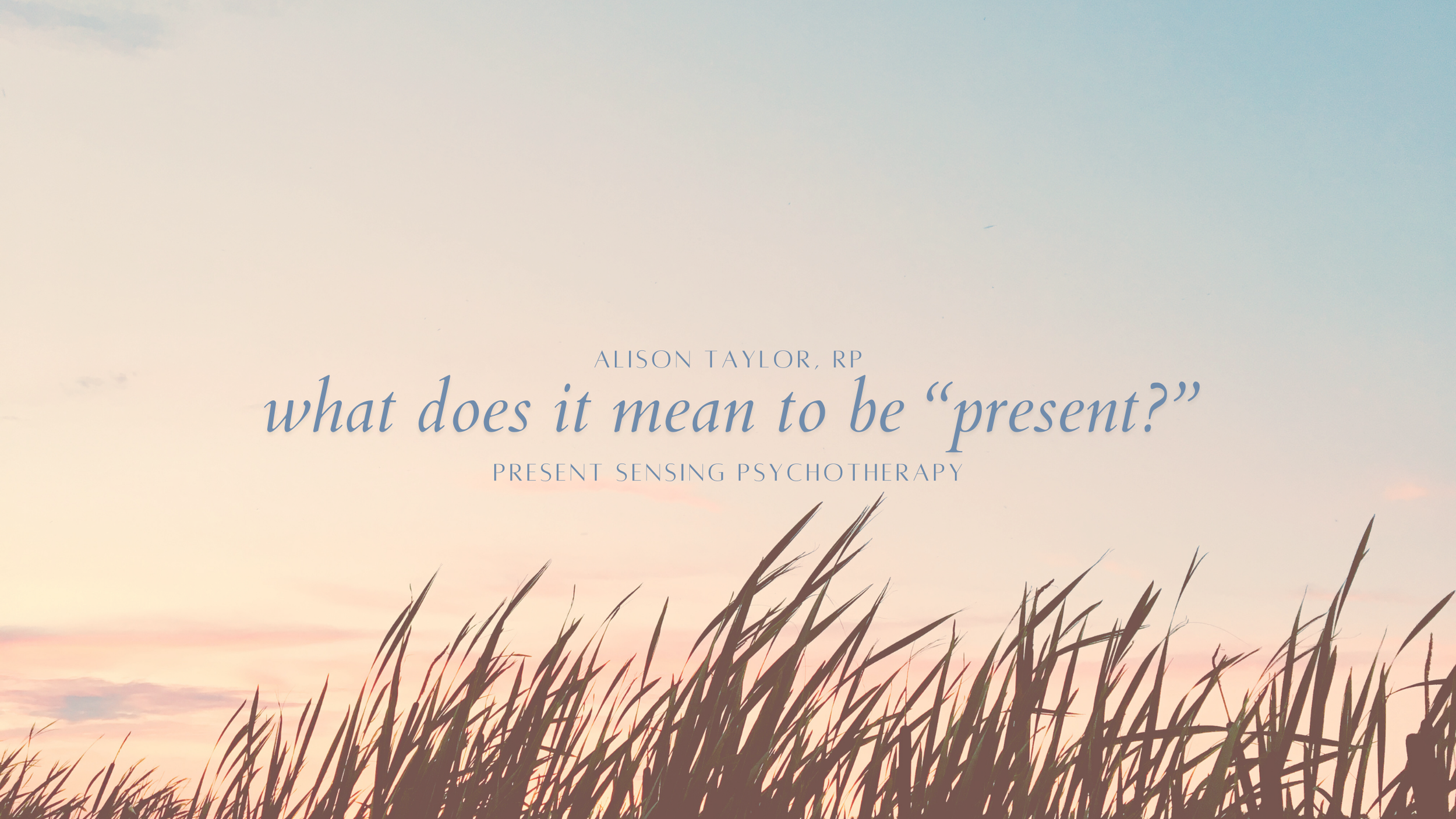What Does It Mean to Be “Present”?
“lose your mind and come to your senses”
Fritz Perls
As human beings, we have an incredible capacity to think. We can plan, analyze, discern, problem-solve — and sometimes even catastrophize. These abilities are vital for survival and belonging.
But sometimes thinking pulls us away from the present moment. We get lost in our thoughts and disconnect from ourselves and from others. Learning how to pause and return to embodied awareness helps us feel grounded, connected, and present.
In embodied, relational Gestalt therapy, presence is central: the here-and-now is where awareness, support, and possibility emerge.
What Does It Mean to Be Present?
Being present can look different for each person. For some, presence is a flow state — losing self-consciousness and “going with the flow.” For others, it means becoming more aware of feelings and sensations, breathing more easily, and taking in new information with clarity.
Signs you may be present include:
feeling grounded and calm
available to notice sensations in your body
breathing more freely
being less caught up in self-judgment
feeling connected to yourself and others
How to Return to the Present Moment
One way to get present is to bring attention to your senses and physical experience. This might involve noticing:
your breath moving in and out
the texture of the chair beneath you
sounds in the room or environment
sensations like warmth, bound muscles, or ease
It may feel challenging — even frightening — to pause and notice your body. Often, there are good reasons we spend so much time in our heads. Therapy offers a safe, supportive space to gently explore your embodied presence without judgment.
Presence in Embodied, Relational Gestalt Therapy
In therapy, presence is not about choosing between “being in your head” or “being in your body.” Both ways of being are valuable. What matters is exploring the continuum between cognitive process and embodied experience, discovering new ways of knowing yourself.
Through embodied, relational Gestalt therapy, you can:
build awareness of how you shift between thought and sensation
strengthen your capacity to be present with yourself and others
discover choice and possibility in how you meet the world
experience support in the here-and-now at your own pace
Frequently Asked Questions About Presence in Therapy
What does “being present” mean in therapy?
Being present means bringing awareness to the here-and-now — your sensations, feelings, and relational experience — rather than being lost in thoughts or past/future worries.
Why is presence important for mental health?
Presence helps you feel grounded, regulate emotions, and connect authentically with yourself and others. It can reduce anxiety and increase flexibility.
What if I find it hard to be present?
Many people do. In therapy together, we can find what specific supports you need to explore presence gently and safely, at a pace that feels manageable.
How does embodied, relational Gestalt therapy explore presence?
This approach uses body awareness, relational dialogue, and present-moment focus to help you notice how you experience yourself and others in real time.
Do you offer therapy for presence and awareness online?
Yes. I offer embodied, relational Gestalt therapy in Toronto and online therapy across Ontario to support presence, awareness, and connection.
Book a free consultation to explore what therapy can make possible.


